Regular updates on projects undertaken by our team of restoration ecologists, entomologists, plant ecologists, and researchers.
The Xerces Society manages the largest pollinator conservation program in the world. We work with people from all walks of life to create habitat for bees, butterflies, and other beneficial insects—and hundreds of thousands of acres of flower-rich habitat have been planted. We also offer certifications: Bee Better Certified for farmers and food companies who are committed to supporting pollinator conservation in agricultural lands, and Bee City USA and Bee Campus USA for cities and colleges dedicated to making their community safer for pollinators.
With staff based in more than a dozen states, and offering a diverse array of expertise, it can be challenging to summarize the impactful work being done. We compile updates from pollinator team members into regular digests. In this edition, Sarah Hamilton Buxton describes a multi-organization collaboration bringing pollinator plantings to the heart of Bismarck, ND, and Jennifer Hopwood introduces the amazing life beneath our feet that is at the center of a new conservation initiative.
Planting for Pollinators in Downtown Bismarck, ND
Sarah Hamilton Buxton
The Downtown Bismarck Pollinator Planting Project is a collaborative effort that began in 2019. To date, ten flower beds have been planted with perennial, season-long pollinator habitat in the heart of Bismarck, North Dakota.
Each bed is planted according to plans created by a landscape architect with the Bismarck Parks & Recreation District. In 2020, the initial phase established four flower beds planted with native wildflowers, with the remaining six planted earlier this year. Project plantings use a variety of flowers that bloom in the early, mid, and late seasons to ensure that pollen and nectar are available to pollinators throughout the growing season. The flower bed designs also include a native bunchgrass to provide shelter and over wintering habitat for pollinators.
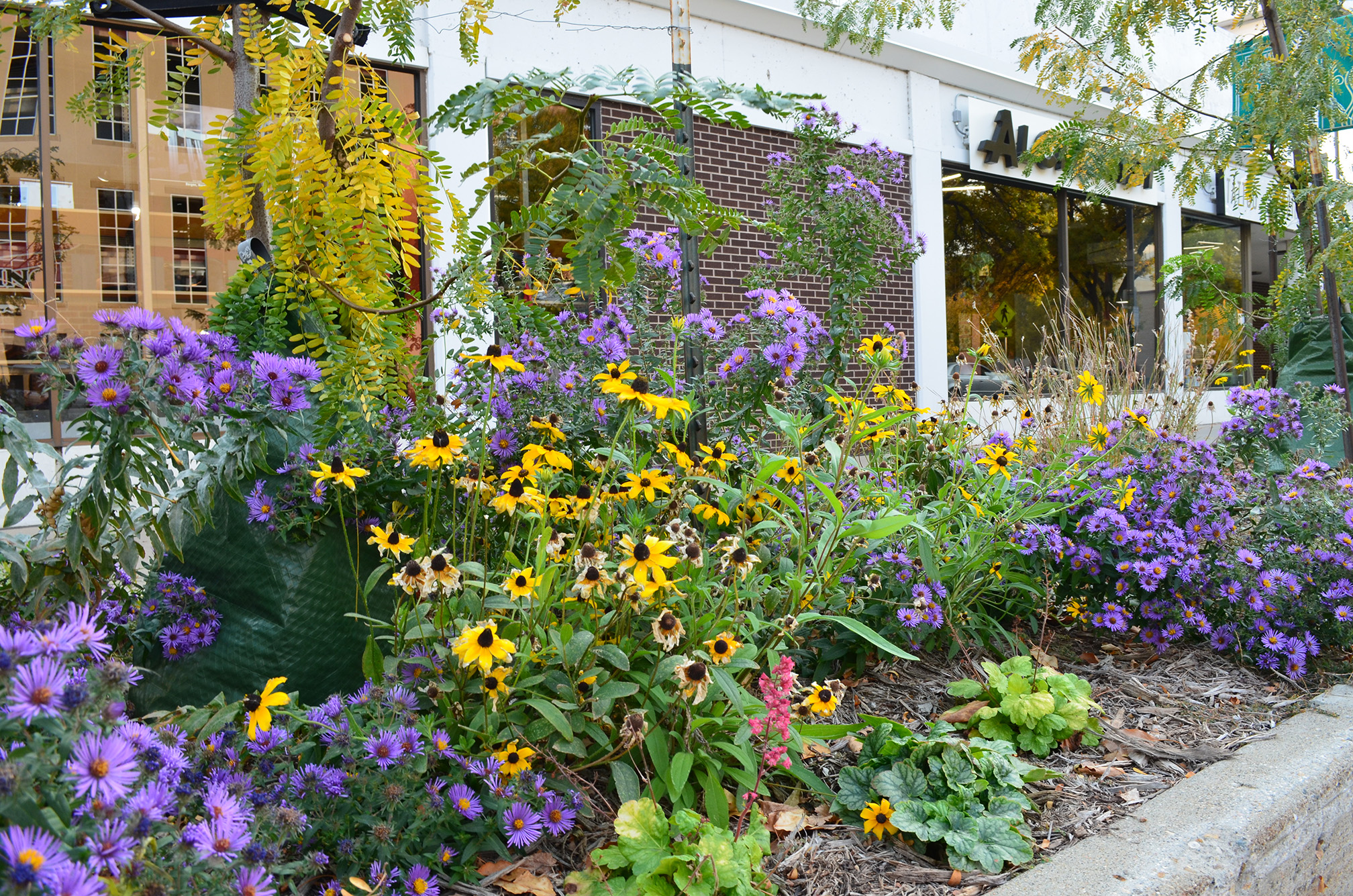
A partnership in Bismarck, ND, between Xerces Society and many local organizations has resulted in spectacular pollinator plantings in the city’s downtown.
By creating beds in a very urban area of the town, we can show how pollinator habitats can be established in small(er) spaces and in a wide array of locations. In doing so, this project will inspire others to get involved as well as inform and educate community members and visitors of all ages about pollinators and the important role they play in ecosystems, conservation, habitat, and food supply.
The Downtown Bismarck Pollinator Planting Project is a collaboration between a large number of businesses, nonprofits, and government agencies including: Xerces Society for Invertebrate Conservation, USDA Natural Resources Conservation Service, Lewis & Clark Wildlife Club, Downtown Business Association of Bismarck, Downtown Bismarck Community Foundation, Northern Plains National Heritage Area/Northern Plains Heritage Foundation, Dakota West Arts Council, Ehrens Consulting, Bismarck Parks & Recreation District, Burleigh County Soil Conservation District, and City of Bismarck.
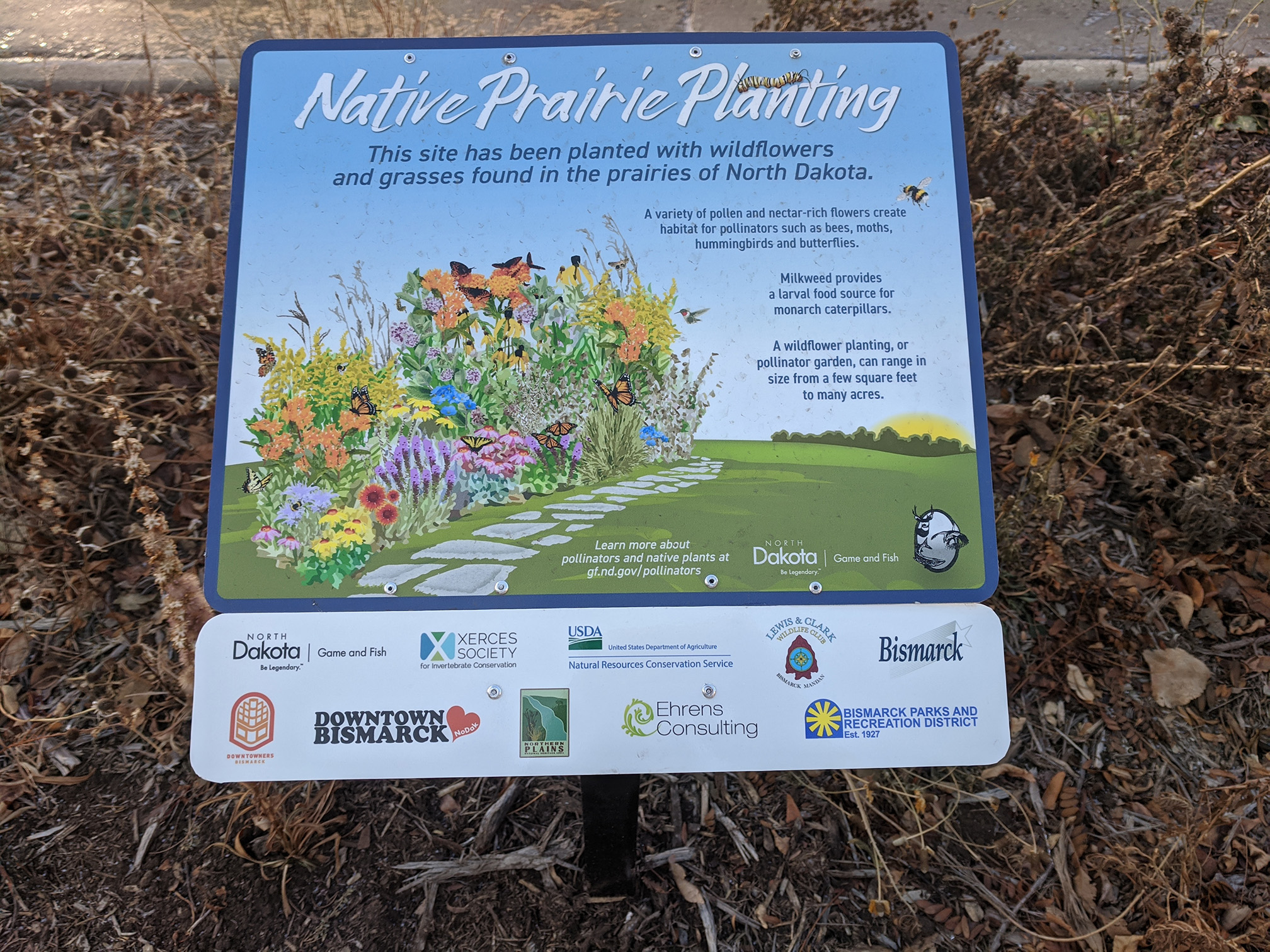
Information signs accompany the downtown plantings, enhancing their value as a community resource and inspiration for other efforts.
Life Beneath Our Feet
Jennifer Hopwood
Xerces is well known for its pollinator conservation work across a variety of landscapes. Less known is that this work is often holistic, supporting a wide range of other beneficial insects beyond pollinators. This is particularly true on working lands, where steps taken to help pollinators can also benefit conservation biological control and soil health.
When it comes to soil health, microbes like bacteria and fungi, along with cover crops and other plantings, are superstars. But they aren’t working alone; a whole host of soil animals also contribute to soil health by improving soil structure, increasing soil fertility through decomposition of plants and animals and mixing of soil layers, and as predators and other roles in soil food webs. Soil contains a vast diversity of life, with soil animals comprising over 25 percent of all species on the entire planet. And of these soil animals, 99 percent are invertebrates. From microscopic nematodes in water films and soil pores to tiny springtails that navigate through existing soil tunnels to millipedes and other larger arthropods that create their own burrows, soil animal life is a complex, fascinating web that ultimately supports life above ground.
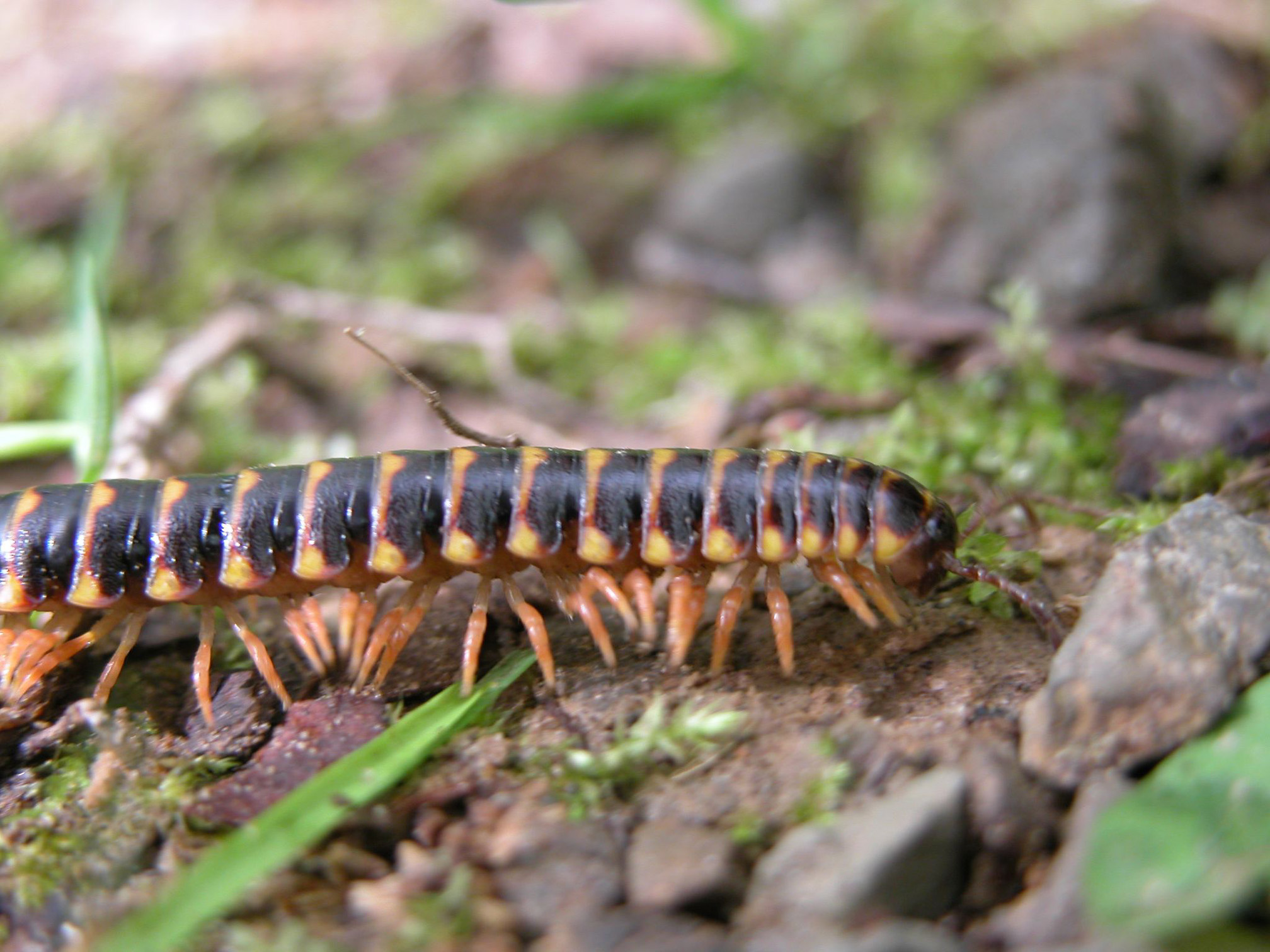
Millipedes are important decomposers in soil systems. They fragment a significant portion of autumn leaf fall, breaking it down into pieces more readily available for further decomposition by microbes. (Photo: D. Fletcher, Flickr.)
The vast majority of soil animal interactions happen below our feet, out of sight. They are a diverse group, and here I can highlight only a few of the many amazing animals.
Among the smallest of soil animals, tardigrades live in water films. Also known as water bears, these animals have stubby legs, claws, and move in a lumbering manner. As predators of bacteria and fungi, tardigrades may influence microbial communities; they also feed on rotifers and algae. Tardigrades are of particular interest to some scientists because they are incredibly hardy. They can survive extreme temperatures, as well as radiation, and can even go days without oxygen. Along with other microscopic soil life that reside in water films, tardigrades are susceptible to fluctuating moisture levels in soil. They have adapted by entering a state of suspended animation when soils dry up. With slowed metabolism, they can exist in this state for several decades. (This might seem astonishing, but tardigrades don’t hold the record for the longest surviving soil animal; that honor goes to some nematodes revived from 30,000-year-old glacial deposits!)
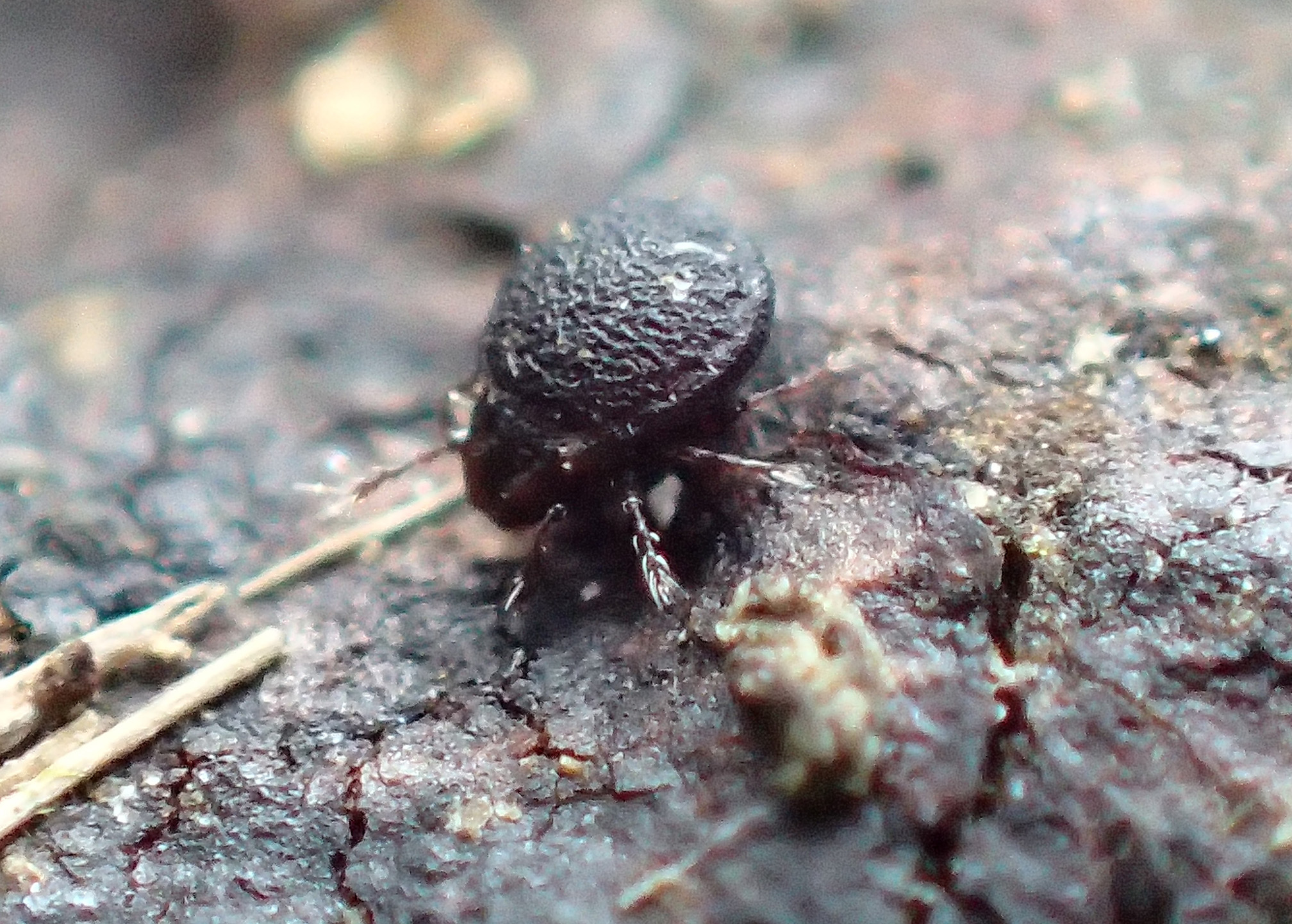
Mites are one of the most abundant and diverse groups of soil animals, and often have unique communities associated with different types of soil. (Photo: Brenda Dobbs, Flickr.)
Tiny and unassuming, soil mites are found on the soil surface, within the upper soil layers, and in deeper soil, up to 10 meters. A number of soil mites are super-decomposers, and contribute significantly to the breakdown of plant and animal matter. Though bacteria and fungi are critical to the decomposition process, mites help by fragmenting pieces into sizes that increase bacterial activity and enhance further decomposition. Other soil mites are predators, feeding on small soil animals like springtails.
Adult tiger beetles are often found on the soil surface, hunting for arthropod prey. They have extremely good eyesight, and are very fast runners, qualities that make them excellent hunters. Tiger beetle larvae also have excellent eyesight, but in contrast are sit-and-wait predators. They dig a vertical burrow 3–10 inches in depth, and anchor themselves to the wall, where they wait. With flat heads that lie flush with the soil surface, these larvae watch for prey that comes (too) close to their burrow. Then they’ll strike out to grab their prey and drag it down into the burrow where it will be devoured. Tiger beetles spend one to three years in the larval stage, feeding on other soil arthropods.
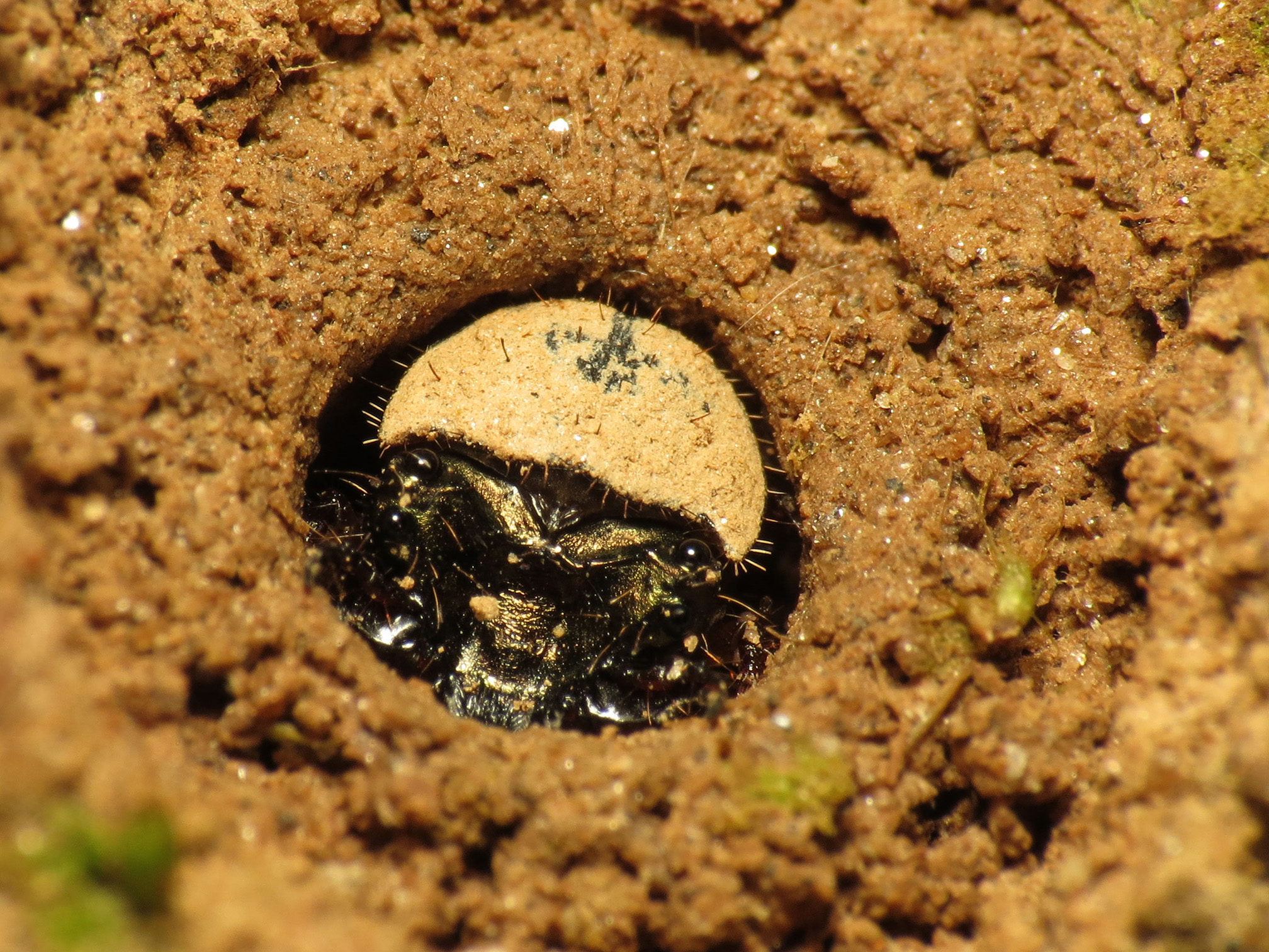
The sharp jaws of this tiger beetle larva are concealed underneath the flat head that hovers just below the soil surface, waiting patiently for prey to come within striking distance. (Photo: Katja Schultz, Flickr.)
The role that bees play above ground is well known. Bees are efficient and important pollinators of the majority of wild flowering plants as well as about 70 percent of the world’s most cultivated crops. But the digging activity of bees that nest in the ground is also important in that they move and mix a great deal of soil in the process of constructing their nests. Though most ground-nesting bee species are solitary, with each female creating and provisioning her own nest for her young without assistance from others, the tunnels she excavates within that nest can be extensive. Though some species nest in the upper soil layers, within a few centimeters of the surface, many others nest a foot or more down. A few species have nests that extend a meter or more in depth! Any producer hoping for high-quality crop pollination must consider the connection that bees have to soil when managing their land.
In keeping with our holistic approach, Xerces has recently launched a soil life initiative. Our new publication, Farming with Soil Life, has descriptions of these soil animals and many other invertebrates living in and contributing to healthy soils. The handbook includes guidance on supporting soil invertebrates and soil health through farm practices. Xerces is also offering a series of Farming with Soil Life short courses this summer and fall (with more coming in 2022), each course with a regional focus. For more information about these courses, please visit the events page on our website. You’ll also find recordings of webinars and short courses on the Xerces YouTube channel.
Further Reading
Learn more about the Xerces Society’s Pollinator Conservation Program.
Find out how you can help Bring Back the Pollinators.
Explore the webinars and videos on the Xerces YouTube channel.





